House building in Thailand is something many Westerners need to understand if they want to know how to build a house in Thailand without messing up. As it is anywhere in the world, the cost of building a house in Thailand will vary enormously depending on the region, size and quality of build.
Let me explain how house building in Thailand requires mastering these 10 essentials.
- Project Plan.
- Land title and access rights.
- Water and electricity availability.
- Bill of Quantities.
- Detailed Budget.
- A good, trustworthy builder.
- Estimate and Negotiate labour costs.
- Win the team’s trust.
- Manage the project.
- Buy the materials.
When I built my first house in Thailand in 2009, I made a lot of mistakes, despite having a Thai architect whom I knew well.
There are many factors that need to be addressed, and I am considering writing an eBook and paperback guide to help people avoid the mistakes I made. In the meantime this article is aimed at pointing those thinking about building a house in Thailand in the right direction.
In 2015 I took a four month break from writing so I could build a second house in the North of Thailand. I soon realised the four months were anything but a break. More a physical and mental ordeal I promised never to undertake again after the mistakes I made the first time around in the North-East.
The First House was a nightmare
I have renovated houses in England, Cape Town and Thailand. And I have now built two houses in Thailand, which, for an amateur developer, can be a daunting challenge. Both houses presented different challenges, and I could write a book on each and probably save others some pain.
The first book would be entitled ‘How NOT to build a house in Thailand’. It would be the ‘go to’ bible for any naive, unsuspecting ex-pat attempting the feat for the first time. I am not going to dwell on the problems in this article, but rather highlight important things to be aware of so you will avoid making serious mistakes.
The Second House was a breeze.
The sequel ‘Second time lucky’ would be a definitive guide on how I learned from my mistakes the first time round. And it would prove that miracles do happen and the impossible is not.
I will do my best to explain some of the pitfalls and how to avoid them, so you can enjoy the stressful process of house building in Thailand and end up with a nice home.
But why did I build it?
I won’t go into the details, save to say, we do things in life that don’t work out and we do things that do. Sometimes we don’t know why we do them, and sometimes we shouldn’t have. It’s easy to go through life without making mistakes by not doing anything. Some people are so averse to risk, that is what they do. I’m not one of them, so I make a lot of mistakes.
If at first you don’t succeed is an old cliche applicable to my experience of house building in Thailand. I’ve renovated many houses in England and South-Africa, but until I moved to Thailand I had never built a house starting with an empty plot of land. Even though I had never seen the Asian post and beam method of building, I studied it and with a local architect (friend) on board I was confident I could do it.
Bit it wasn’t long before I vowed never to do it again. But I can never resist a challenge, and I had something to prove to myself. So, when the opportunity arose I took it.
Why build a house in Thailand?
Before getting into the process of building, we should ask, why build a house in Thailand when there are so many to rent?
There are good reasons when building is the right option, particularly if you have a Thai family and want to leave them an asset when you die and don’t mind shelling out a chunk of capital today.
But leaving a property in Thailand to relatives in another country is not such a good idea for a variety of reasons. The main one being legal ownership or title.
Ownership
Foreigners can enter into long term leases up to 30 years (renewable) but cannot acquire the chanote (freehold title) to a plot of land. If you get a lease, you are then free to build on the land and own the house. There are other ways which I won’t deal with here.
Where a foreigner has a Thai partner or spouse they may choose to build on a plot the partner owns. In my case, my partner sold the family home when her father died, and I built a new house for her on another pot she owned.
She owns title to the land (Chanote) and the house she paid for. I have a Tabien Baan (Yellow House Book) and a Thai ID card which is proof of legal residence.
Rent or Buy
If the foreigner is unattached, I would suggest that renting is generally the best option.
The choice to rent has always been a good option in Thailand because the choice of properties to rent is mind boggling. And post COVID19 there are so many properties on the market that negotiating a rent reduction of 30% should be easy. Landlords are usually relaxed and happy to allow long-term tenants (1 year+) the freedom to make alterations, so the house is yours for as long as you like. Plus you are free to move on whenever it suits you.
For older foreigners settling in Thailand the flexibility and freedom renting offers makes it almost a no-brainer.
Here is a simple example: Assume a 65 year old man want’s to live in a condo/house valued at 5 millon Baht. He/she doesn’t want the responsibility and cost of maintenance and would prefer to hang onto his/her cash. Rent may be around 250,000 Baht a year, so it will take 20 years to spend 5 million. Depending on the location you could stretch 20 to 30 years, by which time the tenant would be 95.
Warning
Think hard before you sink capital into property in a country where you have no rights of citizenship and are not a permanent resident. Thailand is a comfortable place to live in many ways, but it has a history of political instability and has seen countless Military Coups. There is a lot of red tape and little protection for foreigners.
Now back to building.
FAQ’s
House building in Thailand is not something any Westerner should undertake lightly or without a firm grasp of the following often asked questions.
When is the best time of year to build?

Build in the coolest and driest time of the year, between November and March. In the rural areas, farmers and builders double up. So, if there is farm work to be done in the middle of a build don’t be surprised to lose workers for a while.
What is required to undertake and complete the project?

An understanding of the building process, how to work with Thai builders and a cohesive plan are required to guarantee success.
Is it necessary to manage the project myself?
If you are not prepared or able to manage the project yourself quit now before it’s too late. The cost of hiring a professional Thai project manager, if you can find one, will be exhorbitant. And one-off house builders are unlikely to welcome the intrusion.
How do I find a competent lead builder and assemble a core team?
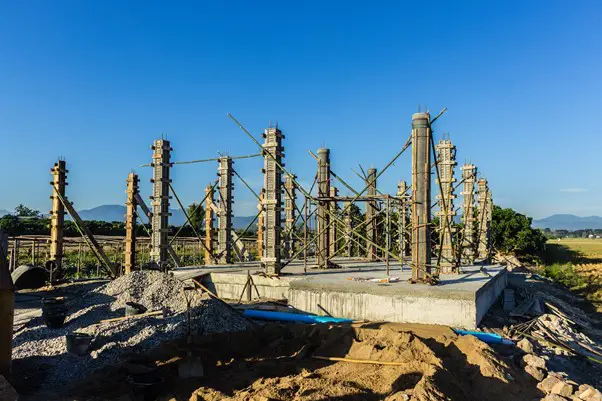
The lead builder will assemble his team. Finding the right man to lead is critical and will depend on your connection or your spouse’s knowledge of builders in the locale. If your project is over 2 million Baht you could consider a reputable small building company. But still keep hold of the reins.
How do I produce a ‘Bill of Quantities’?
I am considering producing a spreadsheet template using my own BOQ. if you need a rough guide write to me and I will help. Otherwise you need to spec the whole project out from plans and in consultation with the builder.
How do I budget accurately?
With experience I budgeted accurately on the second house and surprised myself. No-one wants to work on a project on a trial and error basis, so you will have to work hard to find good deals and cost materials. There’s no easy answer.
Who should be responsible for the material buying?

You should do all the buying, except for structural concrete and steel, plumbing and electrical, (except fittings), where costs are pretty standard. Make yourself known to the best local builders merchants, who are usually Chinese owned, good business people and usually accomodating with deliveries and returns.
With a fixed price labour contract, you approve and pay for materials. But beware – The builder will have supply contacts for structural materials but you musn’t let him pay suppliers (that’s where he can run up credit and stuff you)
How do I estimate and negotiate labour costs?

Here’s a rule of thumb for a single storey, 100 square metre, decent quality house like mine pictured in this artcle. The 5 man skilled team cost 270,000 Baht. From the day we cleared the land and back-filled it, until the finish day took exactly 3 months. Work on 600 Baht a day per man and 1 square metre a day time to build and you won’t be far out.
Beware – The builder may ask for up front stage payments. Resist. Rather pay weekly and make sure all his workers are paid. I got caught on the first house. E.G. A 16 week fixed price labour contract of 360,000 Baht/16 = 22,500pw
Managing the Project
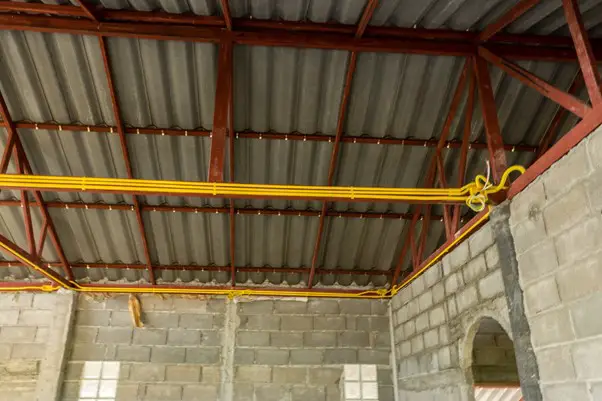
I can chuckle now when I recall an American friend saying “You are only managing the project, I take it.” Experience has taught me that if you want the house to be built to a reasonable standard you have to roll your sleeves up.
No, I was not only managing the project. I was on site every morning before the builders arrived to make sure any mistakes were corrected quickly and they had everything they needed for the day. The last thing you want is builders wandering offsite for 30 mins because they are short of one screw.
How different is house building in Thailand?
There are a number of reasons why house building in Thailand is different to building a house in the Western world. Here are some pointers.
- The builders are unlikely to speak English. So, if you don’t speak Thai you are immediately at a disadvantage.
- You need to win the trust of the builders as quickly as possible. Never be bombastic.
- Learn how they build in Thailand and respect the method.
- Don’t let the order sequence stray from, Posts and beams – Floor slabs – Basic plumbing – Roof – Walls – Kitchen – Bathrooms – Electrics – Plastering – Ceilings – Floors -Finishes. E.G. When the builder of my first house asked if they could start plastering before the electrics were in, I knew there was a problem looming.
- If you know anything about building show them you do but in a practical and helpful way. You will be respected for it.
- Work with them as though you are one of the team on the payroll too.
- Buy them a few beers and drink with them every weekend to celebrate progress.
- Have a barbecue at the end of each month.
The Project Plan Summary
Concept Plan
Even if you can’t draw you should be able to get your ideas down on paper as a basic floor plan. From this you can play around until you formulate a concept plan to discuss with the person you find to draw up the structural plans. (See Permission below)
Position
Establish the best position for the house and make sure your design allows for sun protection in the South and West.
Permission
You don’t need Planning Permission in rural Thailand. But you will need plans to be approved. Draw your design and find someone who can draw up plans needed for builders/Municipality/Engineers. You can make changes as you build once your plans are approved. If you don’t have contact with an architect, someone at the Municipality should be able to point you in the right direction.
Landfill and ground level floor height
If you are building on farmland you should raise the building area up to the same level as the road in, usually about one metre. The longer time it has to settle the better. You dont need to wait until the municipality approves your plans to start the ground work.
The ground floor should be approximately 60cms higher, so the posts should be sunk about one and a half metres depending on the water table.
How to save money
Save on materials without compromising too much as follows:
ROOF:
Simplifying the roof design and structure (1m overlap. Double coping for airflow. A rectangular barn style is best. Don’t use guttering, so make sure there is adequate ground runaway.
POSTS:
Keep the number of posts to minimum and spacing at 4 metres if possible. More will require more strenght and less with mean too many posts. E.G. 12 posts with 4m span = 96sm
INTERIOR LAYOUT:
For maximum efficiency, use of space, light and airflow, open plan will save a lot on costs. We have no internal doors (1 Bed). Ceilings with Drop tiles and air vents.
WATER WASTE MANAGEMENT:
Septic tank with leach field, storage tank, pumps and plumbing. Make sure to have adequate outside taps and points ready to install irrigation for the garden. I always put 4 points near the 4 corners of the house.
ELECTRICS:
Think out plug point positioning and bring supply underground and Internet. Conduit wiring. Don’t forget to have enough external power points for electrical work and outside appliances like mowers, weedeaters, drills etc.
WINDOWS AND DOORS:
Windows and doors contractors. I used the best local made – not imported – brushed aluminium.
SURROUNDS AND ACCESS:
Keep the garden away from the house to avoid rising damp.
FINISHES:
I used polished cement walls, and kitchen and bathroom counter tops (sealed). Backsplashes in the kitchen and bathroom are tiled.
DEALS AT HOMEPRO:
I saved a lot by using end of range discounted tiles. I got good quality 60cm ceramic tiles at nearly half-price. Look for end range and special deals.
What is the cost of building a house in thailand?
My second house came in on time and budget at 7000 Baht psm. Including carport (30sm) the total floor area is 100sm.
Materials accounted for 60% of the cost, 430,000 Baht (including plans and engineer’s stamp). The building team 40% – 270,000 Baht. 5 men averaging 600 Baht PD. Minimum unskilled labour is 300 BPD. That’s for the ground crew, making posts and beams, mixing concrete, block laying and shovelling shit. Once they go the skilled work starts.
It took exactly 3 months from the first landfill truck till the day we moved in.
Excluding the plot, outside the main cities, you can build a cheap 30 sm, 1 bed bungalow for 4000Baht psm or you can build a 200 sm quality house for 10,000 Baht psm. Take it from there.
Phuket land and building costs are far too high in my opinion and don’t represent good value. But if you have money burning a hole in your pocket you can spend a fortune. Add some expensive imported tiles, windows and so on. The choice is yours.
Returning to life
When the time came to return to my normal rural life, I found the adjustment more difficult than I imagined. I had adjusted to a routine of rising early, with the birds. Then I walked three kilometres to the site, checking on yesterdays progress. I waiting for the team to arrive at eight o’clock. I was in a groove, on a mission to complete the project within budget and on time. During the building months, I missed writing and photography. I was a little flat. But when my focus shifted back to my passions, my creative juices began to flow again.
I was soon ready for writing action. But my PC had other ideas. Despite hours of coaxing, debugging and frustration, it was determined to ‘go slow’. It was as fast as a one-legged tortoise on valium. But the fix was in the mix, and within a week everything was up to F1 standard. And I was doing my utmost to publish more works of interest for my readers. I’m not sure but maybe I’ll seriously consider that ‘building a house’ book one day.
Don’t forget the garden
I nearly forgot. I purposely did not include the garden in the house building project, because working with nature is a different ball game. Lay the basics out so that the house and garden become one creation. Then take your time and coax it to life over months and years. Read my article on how to build a tropical garden for some ideas.
I had to create yet another one. I’ve now made them in England, Cape Town (2) and Thailand (3), at least ten in all. When I look back on my life, I could have been a landscape gardener, interior decorator or builder, and many other things. The choices we make.
When I built the house, I should have put a sala extension at the back, but didn’t think about it. But never mind, I have done it since. And what a wonderful addition for as little as $660, as you can see in my post here.
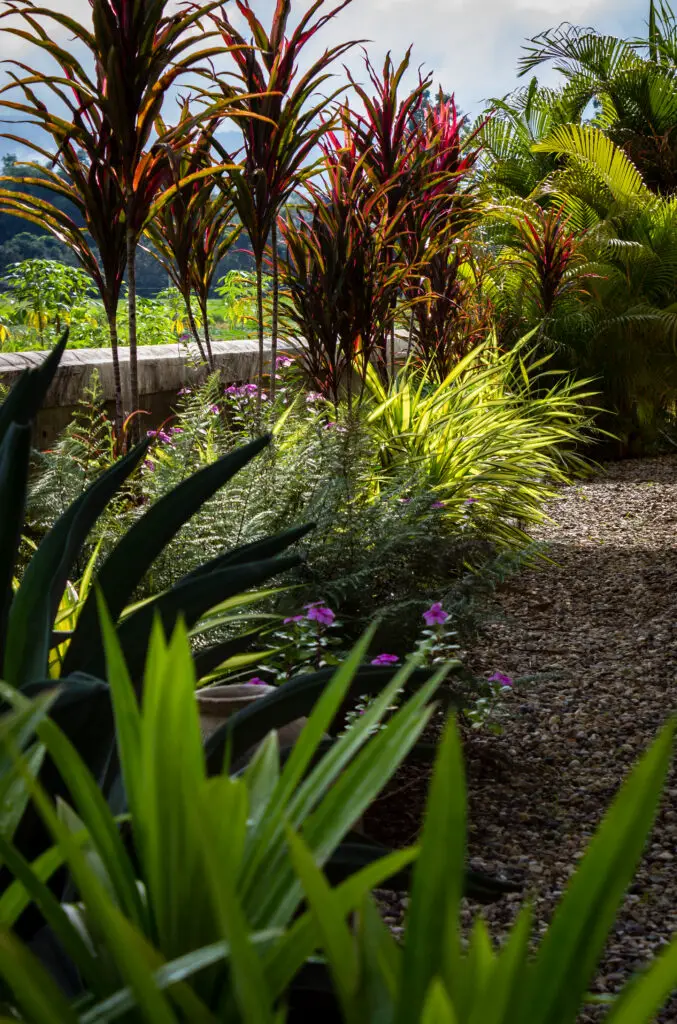
I am fortunate to benefit from physical activity and believe in the importance of maintaining fitness throughout life. So undertaking the strain, even at the ripe old age of 73, was not actually a consideration. Perhaps it should have been. I felt fine after the exertion, although I was a little weary. It soon passed and I put back the five kilograms I wanted to keep off.
Recommended reading
Although – How to Buy Land and Build a House in Thailand – by Philip Bryce, is expensive, I learned a lot from it. Until I produce my own comprehensive guide, I can recommend it as a good reference.


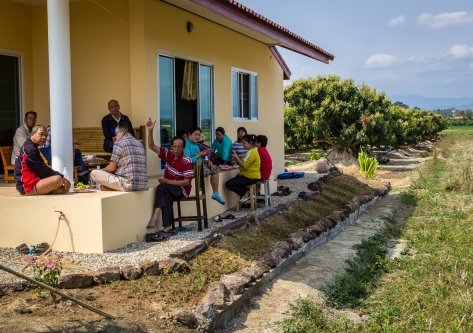
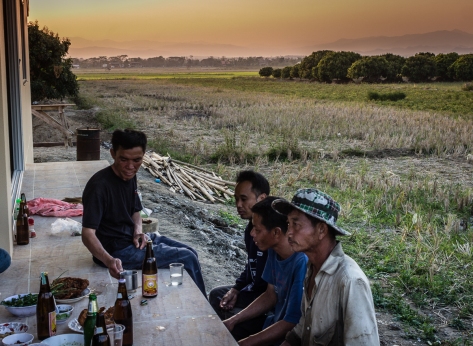

Thanks Dennis. How many colours did you use? I did a sneaaky trick by finishing the interior with cement plaster so no painting costs. The locals think it was a magic trick. Very funny to see them feeling it. Where is Maha Sarakham? Keep well. James
Congratulations on your feat. I agree whole heartedly that maintaining good physical fitness, is the key to longevity and a happy outlook. I’ve just retired at 67, and now I’m spending more time exercising as a means to a better quality of life.
Haven’t quite had the urge to build a house in Thai, but my wife bought one last month in Maha Sarakham, and we just spent the last fortnight painting just about everything that had a surface. The upside comments of neighbours and passerbyers is encouraging, as nobody really does any maintenance on houses in Thai, so the house is a standout feature of the street.
I hope you enjoy your new environs, all the best.